The liposuction procedure is an excellent scientific advancement that allows your surgeon to remove fat from the body without performing invasive surgery. However, there are several different styles of liposuction, and every procedure differs a little bit. In this guide, we’ll teach you all about what to expect from your liposuction procedure, how the methods differ, and the benefits and drawbacks of each.
Types of Liposuction Procedures
Liposuction procedures come in several main types, and there are also add-on procedures that can make the process go more smoothly. For brevity’s sake, we’re going to include them all here. These procedures are:
- Wet liposuction
- Tumescent liposuction
- Ultrasound-assisted liposuction (UAL)
- Laser-assisted liposuction (LAL)
Wet liposuction and tumescent liposuction are the two main types. For a standard liposuction procedure, a solution of saline, lidocaine, and epinephrine is injected into the area that will have fat removed.
This combined solution works to accomplish three things: close blood vessels, loosen fat cells, and numb the area. Saline is a mild saltwater solution that works to loosen fat cells, lidocaine is a numbing agent, and epinephrine helps to prevent excessive bleeding.
The only difference between wet liposuction and tumescent liposuction is the amount of solution that is used. For wet liposuction, equal parts water and fat are typically used; for tumescent liposuction, several times more solution than fat is used.
There are benefits and drawbacks to both approaches. Because more fluid is pumped into fatty areas, tumescent procedures take longer to perform than others. However, excess fluid makes the process run more smoothly. It also results in less bruising and pain for the patient.
Wet liposuction, on the other hand, is a much faster procedure than tumescent liposuction. However, the process often results in a bit more bruising and pain for the patient, and localized anesthesia may be necessary, in addition to the lidocaine.
UAL and LAL are additional methods that can be added on to a tumescent or wet liposuction procedure. With UAL, an ultrasonic device is used to help break up and emulsify fat cells, allowing them to be removed easily and cleanly. With LAL, a laser is used to melt fat cells for a similar effect. However, there is also a risk of burns to the patient with LAL.
What Should I Expect from the Liposuction Procedure?
Before deciding what liposuction procedure is best for you, there are certain things you should know. The most important thing to do is to ask your doctor what their recommendations for you are. They will be able to brief you in more detail based on your unique situation, but this overview should give you a general idea of what to expect.
Your budget should play a role, too. UAL, for example, is believed to help loosen fat cells further and assist in skin tightening after the procedure than traditional liposuction, but it incurs an additional cost. Options like this are things to discuss and consider with your doctor before your procedure begins.
Before the Procedure
Before your procedure, your doctor will mark the areas of your body that will be treated. You may also be asked to stop taking certain medications several weeks before your procedure, such as contraceptive pills or NSAIDs.
It’s very important for you to be at your general target weight before your liposuction procedure. Liposuction is not meant to be a weight-loss procedure, and treating it as such can be very dangerous. Because of these health risks, it is essential to be around your ideal weight before the procedure is performed. This is especially true because poor diet and exercise after your procedure can cause you to lose the slimming effects of your surgery.
During the Procedure
As your procedure begins, your doctor may give you general anesthesia, local anesthesia, or another sedative to help you relax. Your doctor will then create small incisions in the procedure areas marked on your body. Typically, these incisions will be disguised in subtle places, such as under the armpits, behind the ears, or inside the mouth.
The next step is for your doctor to inject the solution we mentioned before into your procedure areas. Optionally, your doctor may also use an ultrasonic device or a laser here to help emulsify the fat in the area. Next, your doctor will use a cannula to remove the fat via a vacuum. The cannula will also vibrate or oscillate to help loosen fat deposits further.
After the Procedure
Once your doctor is satisfied with the results of your procedure, they will wake you from anesthesia, if applicable, and proceed to keep you under watch for about an hour. The purpose of this is to keep an eye out for complications from the procedure, such as:
- Dizziness
- Nausea
- Excessive bleeding
- Fluid accumulation
- Anesthesia complications
- Allergic reactions
Once you’re cleared and out of danger, your doctor will send you home with painkillers, antibiotics, and compressive clothing to help restrict swelling. These garments should be worn for several weeks after your procedure, and your medications should be taken for as long as your doctor recommends.
Benefits of the Liposuction Procedure
The main benefit of liposuction is its cosmetic effect on people. It is very common for people to have trouble shedding fat in difficult areas, such as the stomach, arms, neck, and thighs, even if they’re at a healthy weight. Liposuction solves this problem by removing the fat directly.
Another benefit of liposuction is that the fat cells that are removed will never return. This does not mean that you can’t still gain weight in these problem areas, as your remaining fat cells can grow and expand with improper diet and exercise. However, as long as you maintain a healthy, current weight, the effects of your liposuction procedure are permanent.
With liposuction, you can gain a figure or shape that you might not have been able to with diet and exercise alone. This provides a confidence boost for many people, and it can also make you feel younger and more attractive.
Risks of the Liposuction Procedure
As with any surgical procedure, liposuction comes with its share of risks. Since liposuction is minimally invasive, it is usually a low-risk procedure, but there are a few variables that can affect this level of risk. For example, the risk of lasting damage or life-threatening complications rises as more fat is removed with liposuction.
For this reason, most doctors will not remove more than a maximum of ten pounds of fat during one liposuction procedure. Unless the procedure is being done for a life-saving reason, removing more puts the patient at too high a risk. Some of the risk factors that patients may be exposed to are:
- Irregular contouring from removing too much fat
- Nerve damage
- Infection
- Internal puncture
- Fat emboli
- Lidocaine toxicity
- Kidney and heart problems
However, as long as you see a responsible, certified doctor for the procedure and follow your doctor’s recommendations, your risk for any of these complications should be relatively low. As we mentioned, the more fat that is removed, the higher the chance for problems, so if you are looking to have multiple areas of the body treated, it may be smart to split your procedure into several different trips.
Cost of the Liposuction Procedure
The cost of liposuction varies significantly, so a general number can be hard to pin down. For most simple procedures, patients will pay about $2,500 to $5,000. However, some procedures can go up to as much as $10,000 or more. The expense of these procedures depends on several different factors. For example, even the office you get your procedure done at can make a significant difference in price.
Additionally, special procedure types, like UAL and LAL, will cost more than your standard liposuction procedure. You can choose to have these added onto your procedure depending on what results you desire and your budget.
Logically, a more extensive liposuction treatment will cost more, too. The more fat you have removed from your body, the more expensive the operation will be. Larger operation areas will require more resources and, sometimes, more intense anesthetization. Time spent aside, this means your operation will spend more resources, too.
If you’re looking at a full-body liposuction procedure or a procedure removing more than ten pounds of fat, you may also require a hospital stay during or after the procedure. Predictably, this can add significant cost to the procedure. If possible, it’s best to avoid a hospital stay, both for financial reasons and health reasons.
Conclusion
The procedure for liposuction is fairly straightforward. Even the meaning of the word liposuction – lipo, relating to fat, and suction, like a vacuum – is pretty self-explanatory. However, just because it’s straightforward doesn’t mean you shouldn’t go into it mentally prepared and with a firm grasp of the process.
While some people may prefer not to know every detail of their liposuction procedure, being informed as to what will happen is not without benefit. When you know what your procedure involves, you will know how to care for yourself better afterward, how best not to stress your wounds, and how to heal yourself effectively.

